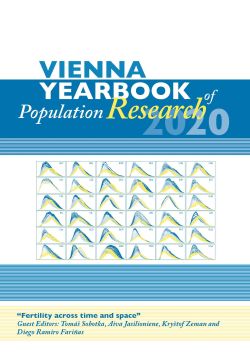
Vienna Yearbook of Population Research 2020, pp. 1-24, 2021/01/21
Fertility across time and space

Current “ultra-low” fertility rates in many countries in Europe and East Asia give rise to concerns about the potential demographic implosion and its consequences. At the same time, some countries in Sub-Saharan Africa continue to have very high fertility rates that fuel long-term demographic momentum. To discuss and position contributions in this volume within contemporary fertility research, this article outlines some of the key research themes and questions on aggregate-level fertility, and discusses the emerging features of post-transitional fertility. Subsequently, it reviews the arguments and conclusions in the Demographic Debate regarding the main factors that are likely to affect fertility in the future. The concluding section highlights the emerging features of a new fertility landscape characterised by new uncertainties, lower reproductive preferences and depressed fertility.
Keywords: Fertility; Low fertility; Global fertility transition; Fertility stalls; Post-transitional fertility; Fertility theories; Fertility preferences; Education and fertility